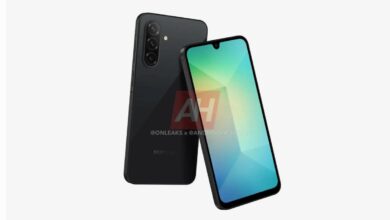The Role of PR in Accelerating B2B Tech Sales


The journey from initial interest to final purchase is rarely linear in the world of B2B technology. While technology companies grapple with this challenge, many recognize the critical role that education and trust play in engaging and convincing buyers that their brand is the preferred option. Public relations (PR), the proactive management of what you say and do through the delivery of communications, content, and thought leadership campaigns, can capture the attention of your target audience long before your sales enablement software is aware of an opportunity.
Savvy tech companies understand that traditional sales pitches don’t cut it in today’s marketplace. They’re leveraging PR strategies and thought leadership initiatives to build credibility and trust. By sharing valuable insights and demonstrating industry expertise, these companies are priming their audiences long before formal sales conversations begin. This approach isn’t just about generating buzz; it’s about creating a foundation of knowledge and respect that paves the way to purchase. In essence, strong PR and thought leadership are becoming indispensable tools in the B2B tech sales arsenal, capable of shortening sales pipelines and improving conversion rates in ways that traditional methods alone can’t match.
General Manager at EC-PR.
Understanding the B2B technology purchasing landscape is essential for effective sales strategies
Purchasing advanced technology software and services is far from spontaneous. It’s a complex process involving multiple stakeholders, each bringing their own biases and perspectives to define problems, develop criteria, and gather information about potential solutions. Gartner research reveals a startling statistic: When considering a purchase, B2B buyers spend only 17% of their time meeting with potential vendors. This limited window of direct interaction underscores the critical importance of effective communication and positioning outside of these meetings. Adding to this complexity is the growing aversion among buyers to engaging with vendors early in the process.
Public relations and thought leadership play a crucial role in influencing buyers
In this challenging environment, PR and thought leadership emerge as valuable tools for technology companies looking to influence and accelerate the buying process. But what exactly do we mean by these terms? Public Relations (PR) is the practice of managing everything a company says, does, and develops to advance its business interests by creating consistent, compelling, and credible relationships with its target audience. Thought leadership, on the other hand, is the demonstration of specific subject matter expertise, knowledge, and insight through stories and content designed to build trust. When executed effectively, PR and thought leadership can build trust and credibility, increase visibility and awareness, and build long-term relationships. All of these factors help support and accelerate the sales process.
Understanding buyer intent in B2B technology is crucial to reaching the right audience
To accelerate the B2B buying process, especially for software, technology companies must first understand the different types of buyer intent. There are several ways to determine what your ideal buyers need. First, ask your internal experts who interact with customers most regularly to describe the concerns of those customers who represent your ideal customer profile (ICP). Conduct desk research using online communities, trade media, analyst reports, podcasts, and LinkedIn to identify common and uncommon pain points. Consider business networking with industry professionals who can provide additional insight. If budget allows, invest in quantitative and qualitative research to refine your understanding of how to address customer problems.
Go beyond common complaints like lack of time and money by developing an advanced understanding of underlying issues to stand out and be memorable. By following these steps, technology companies can effectively tailor their communication strategies to the specific needs and concerns of their prospects, ultimately accelerating the entire buying process.
Effectively deploying your communications strategy can improve your business results
By reducing misunderstandings, facilitating rapid responses, and fostering strong relationships, a good communications strategy will lead to faster, more efficient transactions. A comprehensive communications strategy consists of six essential elements: a concise value proposition that emphasizes your unique point of differentiation; an ideal customer profile (ICP) that identifies your most profitable and satisfying target buyer; detailed target personas that include psychographics and demographics; a positioning statement that describes your product’s solution to specific needs; compelling messaging that aligns with the AIDA funnel; and validation from trusted advisors.
Common Pitfalls to Avoid When Assessing Buyer Intent
As discussed earlier, assessing buyer intent is crucial for technology companies that want to effectively target prospects and convert quickly. However, several common mistakes can undermine this process. Technology companies often misinterpret high engagement metrics like clicks, downloads, and page views as strong purchase intent, when they may only indicate curiosity. Not all interactions are created equal; for example, downloading a whitepaper shows preliminary interest, while requesting a demo or pricing information indicates a prospect is further along in the buying process. Technology companies often fail to distinguish between these behaviors and slow down the purchasing process.
Software and service acquisitions are often held back by a lack of comprehensive buyer profiling or simplistic buyer personas. The only way to speed up the buying process is to understand all the details, such as pain points, decision-making processes, and preferred communication channels. Tech vendors often emphasize features and general benefits over the specific emotional benefits for individuals in the buyer group, focusing on product updates rather than outcomes. Unfortunately, tech companies often only engage with the first point of contact. Focusing too much on one individual can derail a deal if that person leaves the company. Understanding the decision-making unit, which typically consists of 6-10 people, and their priorities is crucial to understanding true intent. When multiple stakeholders engage with your team, make sure they can easily find the information they need.
By offering accessible and effective content, you increase confidence in you as a supplier.
PR can significantly boost sales in the B2B tech sector
In the increasingly complex and often lengthy journey from initial interest to final purchase in the B2B tech landscape, traditional sales tactics fall short. Instead, a strategic approach that leverages PR and thought leadership is proving to be a game-changer. By proactively managing communications, content, and thought leadership campaigns, tech companies can engage and convince buyers before sales management software even detects an opportunity.
The modern B2B buyer spends minimal time interacting directly with vendors, making it essential for technology companies to build trust and credibility through PR efforts outside of these limited interactions. Effective PR and thought leadership not only generates buzz, but also creates a solid foundation of knowledge and respect that smooths the path to purchase, shortens sales cycles, and increases conversion rates.
Understanding the complexities of the B2B tech buying process and identifying specific buyer intents is crucial. Through comprehensive communications strategies that include clear value propositions, detailed buyer personas, and tailored messaging, technology companies can significantly improve their engagement with potential customers. By avoiding common pitfalls and focusing on real buyer signals, they can streamline the sales process and build strong, lasting relationships with their audiences.
In short, integrating PR and thought leadership into your sales strategy isn’t just an extra effort. It’s a fundamental change that can lead to faster, more efficient, and more successful B2B technology sales.
We have listed the best CRM systems for sales.
This article was produced as part of TechRadarPro’s Expert Insights channel, where we showcase the best and brightest minds in the technology sector today. The views expressed here are those of the author and do not necessarily represent those of TechRadarPro or Future plc. If you’re interested in contributing, you can read more here:




